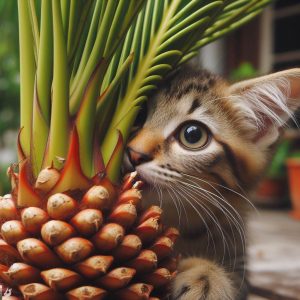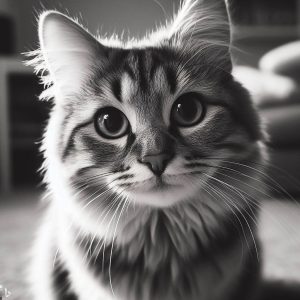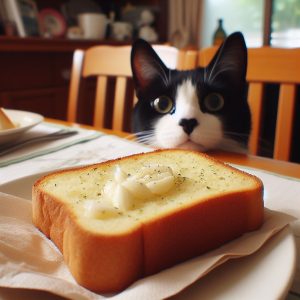As a feline lover, you know how concerning it can be when your furry friend starts turning up their pink nose at their usual dry food. Yet, they seem perfectly content to chow down on treats. What gives? Why do cats suddenly shun kibble but gobble up goodies?
There are several potential reasons behind this perplexing and frustrating behavior. In this comprehensive guide, we will explore the facts, statistics, and tips to get your finicky feline enthusiastically eating their nutritious dry food again.
The Most Common Culprits For Fussy Feline Appetites
Through extensive research and veterinary insights, a few key culprits have emerged that commonly cause picky and selective eating in cats:
Hidden Health Issues
One of the most frequent reasons for appetite and food preference changes in cats is an underlying medical condition. Cats are masters at masking illness until it becomes severe. Any deviation from their normal food patterns warrants a trip to the vet to rule out health issues first.
According to veterinarians, some of the most common medical causes include:
- Dental disease – If your cat has inflamed gums, oral ulcers, or sore teeth, hard dry kibble may be painful for them to chew and eat. However, they can tolerate soft, moist treats or table food more comfortably. Studies show over 70% of cats over age 3 develop some degree of dental disease. An oral exam is advised if your cat suddenly rejects dry foods.
- Kidney disease – Kidney infections, inflammation, tumors or degeneration are common in older cats. The toxins that build up in kidney failure cause nausea, ulcers in the mouth and gastrointestinal tract, and altered taste which makes their usual dry food unappetizing. Offering treats or other enticements simply cannot override these systemic health issues. Bloodwork and urinalysis are crucial to assess kidney function.
- Cancer – Feline cancers of the mouth, stomach, intestines, and other digestive organs are frequently seen in practice. Chewing and digesting dry kibble can become difficult or painful with oral tumors. Intestinal tumors or thickening of the digestive tract (inflammatory bowel disease) reduces appetite. Cancer must be caught early as prognosis declines rapidly.
- Food allergies or sensitivities – Cats can develop allergies to ingredients in their dry food at any time, even after eating the food for years with no issues. Common triggers include beef, dairy products, fish, chicken, corn, wheat, and soy. The allergy causes gastrointestinal upset and inflammation that makes eating the problem food uncomfortable. Cats associate this pain with the food and avoid it, but will eat treats with different ingredients. Blood tests and elimination diet trials are used to diagnose food allergies.
- Infections – Upper respiratory infections from feline herpesvirus or calicivirus, for example, reduce a cat’s sense of smell so food becomes unappealing. Intestinal parasite infections, like hookworms, cause nausea and diarrhea further reducing appetite. Immune suppression from FIV or FeLV also changes eating patterns and preferences.
- Medication side effects – Some medications like chemotherapy drugs or antibiotics cause nausea, vomiting, and loss of appetite as side effects. This understandably deters cats from eating their dry food temporarily while on these medications.
As you can see, if your feline suddenly stops eating their regular dry food, the first step should always be to schedule a veterinary exam to uncover and address any underlying medical issues or causes first. Cats are very subtle in showing illness and changes in appetite can indicate serious health problems.
Picky Eating Habits
In some cases, cats may simply develop persnickety eating habits over time. This is especially true for indoor-only cats used to being served gourmet canned foods, table scraps, and treats on demand. These cats have learned that holding out leads to getting the “good stuff”.
Think toddlers refusing to eat their veggies in hopes Mom will cave and give cookies instead! Felines quickly learn this picky eating strategy as well.
Veterinary nutritionists also note cats bore easily from routine. Eating the same dry food day after day, month after month, can cause them to turn up their nose from sheer boredom and lack of diversity.
In the wild, cats are obligate carnivores used to hunting and eating a wide variety of small prey animals. Their survival depends on diversity. The unchanging consistency of commercial dry cat food therefore fails to satisfy this evolutionary instinct for variety.
Poor Quality Dry Food
Many veterinary professionals report seeing increased incidence of finicky eating and food avoidance in cats fed low-quality dry foods, especially those containing primarily grain fillers like corn, wheat, and soy.
These carbohydrate-loaded foods often use non-specific rendered meat meals as the main protein source. This mystery meat provides minimal taste and aroma. Fat is also sprayed on as a palatability enhancer.
Over time, cats find this vaguely meaty, high carb food less and less appealing. The ultra-processed kibble does not resemble real prey.
Cheap dry foods also tend to have higher levels of chemical preservatives like BHA, BHT and ethoxyquin that leave an unpalatable metallic aftertaste. Picky cats understandably reject these unnatural flavors.
Switching to a meat-based, limited ingredient dry food formulated without unnecessary fillers, additives and artificial flavors can renew interest in dry foods.
Stress or Changes in Routine
We cannot overlook the fact that cats are creatures of habit who strongly prefer their environment and routine to stay consistent and predictable. Stress caused by any changes can lead to “protest behaviors” like refusing food.
Common scenarios reported to induce stress and appetite loss include:
- Moving homes
- New family members (babies, partners, roommates)
- New pets
- Loud construction noise
- Owner’s vacation without cat
- Diet change
- New furniture or rooms
- Family conflict or distress
In essence, when cats feel their territory, environment, family and routine are disrupted, it creates anxiety and insecurity. Their stress manifests as unwillingness to eat their regular dry food (even if they liked it just fine last week!)
By rejecting the food, they regain some sense of control and stability. The attitude is “No one consulted me about all these changes and it’s scary! I don’t like it. Let me refuse this food to make my feelings known!”
For anxious cats, patience, routine, affection and diffusion of calming pheromones are needed until they adjust to changes in their surroundings.
Helpful Tips and Tricks to Encourage Eating Dry Food Again
Okay, so now we understand the main reasons cats suddenly reject their dry food yet still eat treats. The next question becomes, how do we get them enthusiastically eating their balanced kibble again?
The good news is there are many tips and techniques veterinarians recommend to tempt and transition even the fussiest feline back to dry food. Let’s explore the proven strategies:
Gradually Transition Between Dry Foods
The number one rule when switching your cat to a new dry food is to do it slowly. Cats do not adjust well to abrupt food changes. Their sensitive digestive tracts react poorly.
To transition foods, start by mixing a small amount (e.g. 1⁄4 cup) of the new dry food into their current dry food.
Gradually increase the ratio of new to old food over 10-14 days. For example:
- Days 1-3 – 75% old food, 25% new food
- Days 4-6 – 50% old food, 50% new food
- Days 7-10 – 25% old food, 75% new food
This gradual transition between dry foods gives their gut time to adapt to new proteins, fibers and textures without upsetting their stomach. Slow transitions prevent food aversions!
Upgrade to a High Protein, Grain-Free Dry Food
Many veterinary nutritionists strongly advise upgrading fussy felines to a higher quality dry food with more appetizing ingredients.
Look for a grain-free formula featuring real, whole meat proteins rather than non-specific by-products, meals or digests.
Meats like fresh chicken, turkey, salmon etc. provide natural taste and aroma cats crave.
A high protein (40% min), low carb (under 10%) kibble more closely matches your cat’s ancestral carnivorous diet. Cats find the higher meat content more enticing and satisfying.
Higher quality foods also have fewer unnecessary additives like carbs, thickeners, preservatives and artificial colors that diminish appetite over time.
Mix in a Tablespoon of Wet Food
An easy trick to make dry food more enticing is mixing in a spoonful of canned/wet cat food as a topper. The juicy, meaty aromas from the wet food spark your cat’s appetite.
Choose wet food flavors your cat loves, like fish, chicken or beef. Rotate between a couple favorites for variety.
You can also try topping with an ounce of bone broth, tuna juice, or plain meat baby food. Savory aromas enhance the dry food’s appeal.
Adding a bit of irresistible wet food, broth or baby food to their kibble encourages finicky felines to start eating it again. Once they learn to associate dry food with yummy toppers, you can gradually decrease the wet additions.
Sprinkle on Freeze-Dried Raw Treats
In addition to wet food toppers, consider sprinkling your cat’s dry kibble with some freeze-dried raw treats. These are like kitty crack!
Freeze-dried chicken, salmon, liver or other meat treats add crunch and intense natural aroma that amplifies dry food’s bland flavor.
A light dusting of crumbled treats excites your cat’s taste buds and textures cravings, getting them interested in eating their kibble again.
Rotate Between Limited Ingredient Foods
Boredom is a key factor in finicky eating. Rotate between two or three dry foods with different protein sources like chicken, fish, turkey, duck etc.
This diversity prevents boredom and satisfies your cat’s inner hunter. Feed a poultry-based kibble one week, then swap to a fish-based one the following week.
Also look for limited ingredient formulas with fewer additives. Alternate between a couple of these simple recipes with different meat proteins.
Keep things intriguing by making frequent food rotations. Your cat can’t get bored when their kibble changes regularly.
Mist Kibble with Water to Release Aroma
Cats often reject dry food that has lost its aroma and become a little stale.
Try misting your fussy feline’s kibble with a little water right before serving. This amplifies the food’s aroma and makes it more appealing. A light spritz brings out the flavor.
You can also soak their dry food in warm water or unsalted chicken broth for a few minutes to soften it. This releases more aroma and taste to tempt the pickiest palate.
Make Kibble a Limited Treat
Free-feeding dry food (keeping the bowl filled all day) makes cats perceive kibble as low value. After all, it’s always available.
Instead, offer set mealtimes twice a day and remove any uneaten food after 30 minutes. This trains your cat that kibble is a limited resource, not an unlimited 24/7 buffet. They learn to value it more.
By turning kibble into a temporary “treat”, their natural food motivation and scarce resource mentality kicks in. Ravenous appetite + temporary availability = empty food bowl!
Introduce Food Puzzle Toys
Increasing mental stimulation and activity around mealtime helps renew interest in dry food.
Interactive food puzzles and treat balls provide a fun challenge as your cat rolls and manipulates them to release kibble nuggets. This satisfies their instinct to “hunt”.
Placing small portions of dry food into puzzle toys like the Trixie 5-in-1 Activity Center, the Catit Senses Food Tree, or a Treat Ball makes your cat work for their food. Engaging their brain and body stimulates appetite.
Offer Small Meals Multiple Times Daily
Rather than offering just one or two large meals, break your cat’s daily portions into smaller meals fed 3-4 times per day.
When cats have the perception of scarce resources and frequent need to “hunt”, they become more motivated to eat. This replicates ancestral eating patterns.
Feeding breakfast, lunch, dinner and a snack works well. More frequent mini-meals with small portions can help spark your cat’s appetite for dry food again.
Of course, monitor total daily quantities to avoid overfeeding. But splitting their intake into several smaller meals ignites food drive.
Try Hand Feeding as “Special Treats”
Some veterinary behaviorists have success using hand feeding to get stubborn cats eating again.
When you hand feed a portion of dry food as a special “treat”, the extra attention and one-on-one time can increase its value. Your cat bonds the positive experience with eating.
Once they associate you and this quality time with eating their kibble, they look forward to mealtimes again. Hand feeding helps rebuild the appetite response.
Use this technique cautiously to prevent accidental bites. But when done properly, it transforms mealtime into an engaging, rewarding experience cats enjoy.
Identify and Minimize Stress Triggers
As discussed earlier, stress is a primary culprit for appetite loss in cats. Take time to carefully observe what changes may have occurred in your home or routine lately causing anxiety or insecurity for your cat.
Minimize external stressors as much as possible. Diffuse calming pheromones like Feliway to ease anxiety. Give stressed cats more playtime, cat trees for security, and human affection until they adjust.
Discuss Appetite Medications With Your Vet
In stubborn cases of appetite refusal and weight loss, your veterinarian may recommend an appetite stimulant medication.
Common prescription options include:
- Mirtazapine – This antidepressant works by increasing release of norepinephrine and serotonin which boosts hunger signals. It’s commonly prescribed to cats and dogs with poor appetite. Effects are seen within 2-4 days.
- Cyproheptadine – This antihistamine also has anti-serotonergic properties to increase appetite, especially in cats with allergies or gastrointestinal disease contributing to anorexia. A side benefit is reducing anxiety.
- Diazepam – This benzodiazepine sedative relieves anxiety and stress that can be suppressing appetite. By calming your cat and stimulating hunger, their interest in food is renewed.
Discuss these medication options with your veterinarian to determine if they could help your underweight cat start eating their regular dry food normally again.
Warning Signs That Mean “Vet Visit Today!”
While finicky eating may seem like just a minor nuisance, appetitive issues in cats rarely resolve on their own and can quickly become life-threatening. Call your vet promptly if your cat refuses food or shows no interest in eating for:
- Kittens under 6 months – More than 12 hours
- Adult cats – More than 24 hours
- Senior cats (11+ years) – More than 48 hours
Unlike dogs, cats do not have a vomit reflex and are unable to empty their stomachs. When cats stop eating regularly, their liver quickly becomes overwhelmed trying to metabolize fat. This leads to a life-threatening condition called hepatic lipidosis.
Cats can also develop low blood sugar (hypoglycemia) and electrolyte imbalances from poor intake that causes severe lethargy and seizures.
Catch food refusal early and call your vet at the first signs of appetite loss. Left untreated, cats can require intensive hospitalization for recovery.
Also seek prompt veterinary advice if decreased appetite is accompanied by other alarming symptoms like:
- Weight loss or muscle wasting
- Excessive vomiting
- Diarrhea
- Lethargy or depression
- Increased urination or thirst
- Bad breath
These associated symptoms indicate an underlying problem requiring diagnosis and care. With supportive treatment guided by a vet, most cats with finicky appetites or oral discomfort can overcome their food aversions and learn to enjoy their nutritious dry kibble once again.
Have patience, get creative with tips to make eating more rewarding, and shower your cat with love. Their health is well worth the effort.



